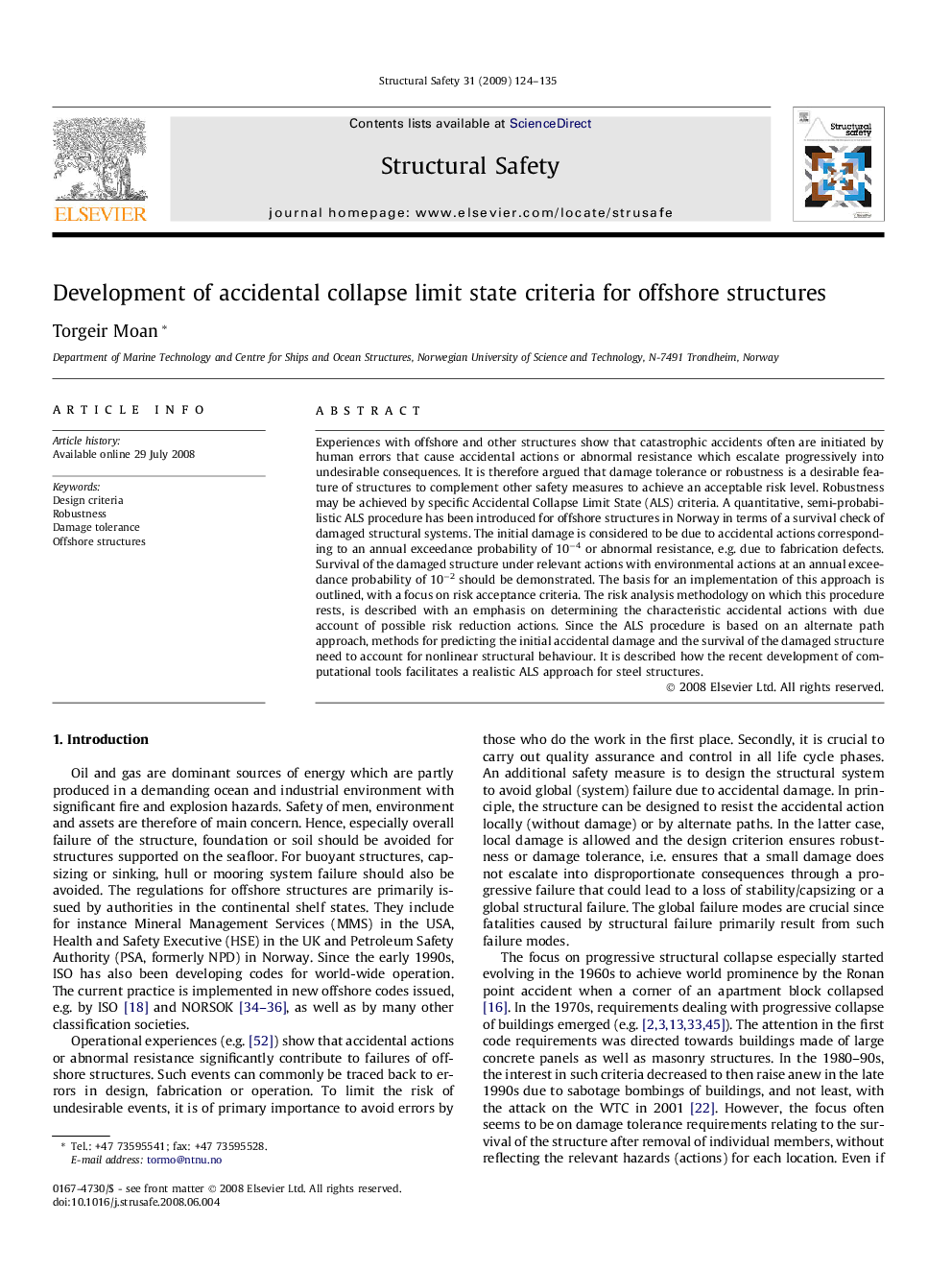| Article ID | Journal | Published Year | Pages | File Type |
|---|---|---|---|---|
| 307808 | Structural Safety | 2009 | 12 Pages |
Experiences with offshore and other structures show that catastrophic accidents often are initiated by human errors that cause accidental actions or abnormal resistance which escalate progressively into undesirable consequences. It is therefore argued that damage tolerance or robustness is a desirable feature of structures to complement other safety measures to achieve an acceptable risk level. Robustness may be achieved by specific Accidental Collapse Limit State (ALS) criteria. A quantitative, semi-probabilistic ALS procedure has been introduced for offshore structures in Norway in terms of a survival check of damaged structural systems. The initial damage is considered to be due to accidental actions corresponding to an annual exceedance probability of 10−4 or abnormal resistance, e.g. due to fabrication defects. Survival of the damaged structure under relevant actions with environmental actions at an annual exceedance probability of 10−2 should be demonstrated. The basis for an implementation of this approach is outlined, with a focus on risk acceptance criteria. The risk analysis methodology on which this procedure rests, is described with an emphasis on determining the characteristic accidental actions with due account of possible risk reduction actions. Since the ALS procedure is based on an alternate path approach, methods for predicting the initial accidental damage and the survival of the damaged structure need to account for nonlinear structural behaviour. It is described how the recent development of computational tools facilitates a realistic ALS approach for steel structures.
